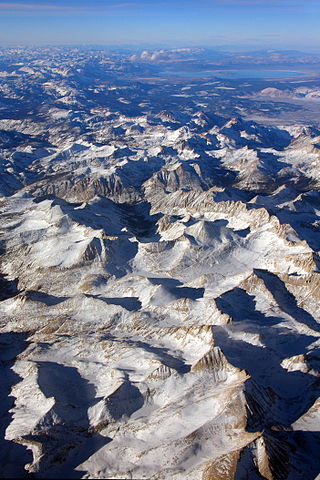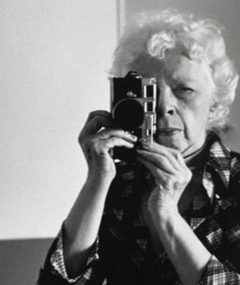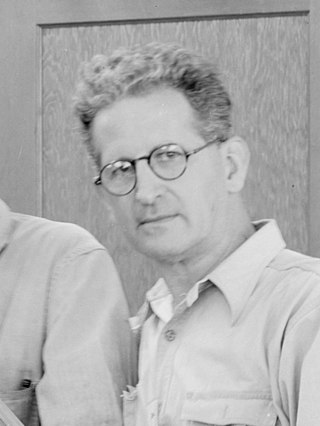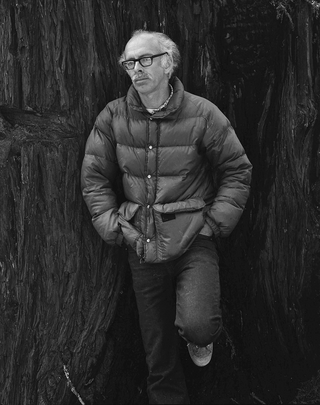Related Research Articles

The Sierra Nevada is a mountain range in the Western United States, between the Central Valley of California and the Great Basin. The vast majority of the range lies in the state of California, although the Carson Range spur lies primarily in Nevada. The Sierra Nevada is part of the American Cordillera, an almost continuous chain of mountain ranges that forms the western "backbone" of the Americas.

Ansel Easton Adams was an American landscape photographer and environmentalist known for his black-and-white images of the American West. He helped found Group f/64, an association of photographers advocating "pure" photography which favored sharp focus and the use of the full tonal range of a photograph. He and Fred Archer developed a system of image-making called the Zone System, a method of achieving a desired final print through a technical understanding of how the tonal range of an image is the result of choices made in exposure, negative development, and printing.

The Ansel Adams Wilderness is a wilderness area in the Sierra Nevada of California, United States. The wilderness spans 231,533 acres (93,698 ha); 33.9% of the territory lies in the Inyo National Forest, 65.8% is in the Sierra National Forest, and the remaining 0.3% covers nearly all of Devils Postpile National Monument. Yosemite National Park lies to the north and northwest, while the John Muir Wilderness lies to the south.

Ruth Bernhard was a German-born American photographer.

Edward Joseph Ruscha IV is an American artist associated with the pop art movement. He has worked in the media of painting, printmaking, drawing, photography, and film. He is also noted for creating several artist's books. Ruscha lives and works in Culver City, California.

Inyo National Forest is a United States National Forest covering parts of the eastern Sierra Nevada of California and the White Mountains of California and Nevada. The forest hosts several superlatives, including Mount Whitney, the highest point in the contiguous United States; Boundary Peak, the highest point in Nevada; and the Ancient Bristlecone Pine Forest, which protects the oldest living trees in the world. The forest, encompassing much of the Owens Valley, was established by Theodore Roosevelt as a way of sectioning off land to accommodate the Los Angeles Aqueduct project in 1907, making the Inyo National Forest one of the least wooded forests in the U.S. National Forest system.

Nancy Wynne Newhall was an American photography critic. She is best known for writing the text to accompany photographs by Ansel Adams and Edward Weston, but was also a widely published writer on photography, conservation, and American culture.

Lisette Model was an Austrian-born American photographer primarily known for the frank humanism of her street photography.

Thousand Island Lake is a large alpine lake in the Sierra Nevada, within the Ansel Adams Wilderness in eastern Madera County, California.

Sonya Noskowiak was a 20th-century German-American photographer and member of the San Francisco photography collective Group f/64 that included Ansel Adams and Edward Weston. She is considered an important figure in one of the great photographic movements of the twentieth century. Throughout her career, Noskowiak photographed landscapes, still lifes, and portraits. Her most well-known, though unacknowledged, portraits are of the author John Steinbeck. In 1936, Noskowiak was awarded a prize at the annual exhibition of the San Francisco Society of Women Artists. She was also represented in the San Francisco Museum of Art’s “Scenes from San Francisco” exhibit in 1939. Ten years before her death, Noskowiak's work was included in a WPA exhibition at the Oakland Museum in Oakland, California.

George Cedric Wright was an American violinist and a wilderness photographer of the High Sierra. He was Ansel Adams's mentor and best friend for decades, and accompanied Adams when three of his most famous photographs were taken. He was a longtime participant in the annual wilderness High Trips sponsored by the Sierra Club.

Moonrise, Hernandez, New Mexico is a black-and-white photograph taken by Ansel Adams, late in the afternoon on November 1, 1941, from a shoulder of highway US 84 / US 285 in the unincorporated community of Hernandez, New Mexico. The photograph shows the Moon rising in a dominating black sky above a collection of modest dwellings, a church and a cross-filled graveyard, with snow-covered mountains in the background. Adams captured a single image, with the sunset lighting the white crosses and buildings. Because Adams did not date the image, attempts have been made to determine a date from astronomical information in the photograph. It is one of Adams' most popular works.
Parmelian Prints of the High Sierras is a portfolio of 18 silver gelatin photographic prints made by Ansel Adams in 1927. It was the first publication of a portfolio of his prints, produced not long after he decided to become a professional photographer, and has since been called "a landmark work in twentieth-century photography."

Dody Weston Thompson was a 20th-century American photographer and chronicler of the history and craft of photography. She learned the art in 1947 and developed her own expression of “straight” or realistic photography, the style that emerged in Northern California in the 1930s. Dody worked closely with contemporary icons Edward Weston, Brett Weston and Ansel Adams during the late 1940s and through the 1950s, with additional collaboration with Brett Weston in the 1980s.
Rondal Partridge was an American photographer. After working as an assistant to well-known photographers Dorothea Lange and Ansel Adams in his youth, he went on to a long career as a photographer and filmmaker.

Ray McSavaney was an American fine-art photographer based in Los Angeles, California. Throughout a spartan but active life, practicing classical Western black and white fine art photography, he made enduring photographs of buildings, bridges, and street scenes of the vast city, ancient ruins and panoramic vistas of the Southwest, and studio setups with varied floral subjects. He died from lymphoma in Los Angeles Veteran's Hospital. Warm tributes to his life and career by some of his close friends and colleagues appear in a ‘celebration of life’ memorial recounted in ‘View Camera’ magazine.

Lodgepole Pines, Lyell Fork of the Merced River, Yosemite National Park is a black-and-white photograph taken by Ansel Adams in 1921. It is one of the photographs that he took at the beginning of his career, when he was following pictorialism, a style inspired by painting, that he soon would abandon for a more realistic approach to photography. This photograph with the title A Grove of Tamarack Pine was included in his Parmelian Prints of the High Sierras portfolio, published in 1927, and its also known by that name.

The Tetons and the Snake River is a black and white photograph taken by Ansel Adams in 1942, at the Grand Teton National Park, in Wyoming. It is one of his best known and most critically acclaimed photographs.

Clearing Winter Storm, Yosemite National Park, California is a black and white photograph taken by Ansel Adams, c. 1937. It is part of a series of natural landscapes photographs that Adams took from Inspiration Point, at Yosemite Valley, since the 1930s.
Aspens, Northern New Mexico is a black and white photograph by American photographer Ansel Adams, taken in 1958.
References
- ↑ The Story of Winter Sunrise, Sierra Nevada from Lone Pine, The Ansel Adams Gallery
- ↑ The Story of Winter Sunrise, Sierra Nevada from Lone Pine, The Ansel Adams Gallery
- ↑ Winter Sunrise, Sierra Nevada, from Lone Pine, National Museum of American History
- ↑ The Story of Winter Sunrise, Sierra Nevada from Lone Pine, The Ansel Adams Gallery
- ↑ Christie's
- ↑ Metropolitan Museum of Art
- ↑ Winter Sunrise, Sierra Nevada, from Lone Pine, National Museum of American History
- ↑ Philadelphia Museum of Art
- ↑ J. Paul Getty Museum
- ↑ Los Angeles County Museum of Art
- ↑ San Francisco Museum of Modern Art
- ↑ High Museum of Art